Hardest Math Problems: The discipline of mathematics has consistently presented a stimulating and captivating academic pursuit for individuals worldwide. Across the annals of time, mathematicians have been confronted with a plethora of intricate and unresolved quandaries that challenge the limits of human comprehension. The aforementioned mathematical conundrums, commonly referred to as the most challenging mathematical problems, necessitate profound mathematical acumen, ingenuity, and tenacity for their resolution.
Mathematical problems that are particularly challenging frequently entail abstract concepts, intricate calculations, and necessitate the use of advanced mathematical tools and techniques. These benchmarks hold great importance in the field, motivating mathematicians to explore the enigmas of the cosmos and enhance our comprehension of mathematics. Complex issues such as these frequently resist facile resolutions and may persist unresolved for prolonged durations, occasionally spanning centuries.
The resolutions of these problems have engrossed the mathematical community, fostering collaborative endeavors and stimulating the emergence of novel mathematical subfields. Certain mathematical problems of great complexity and significance have garnered significant renown and acclaim and has invariably formed the crux of this article as we will be discussing some of them in details.
Recommended: Importance/Benefits Of Prayer: Top 10
Top 10 Toughest/Hardest Math Problems Ever Solved
1. The Kissing Number Problem: The Sphere Packing Problems represent a wide-ranging set of mathematical problems. The spectrum of mathematical concepts encompass both theoretical and applied domains, often employing mathematical lexicon to articulate the notion of arranging multiple spheres within a specified volume, akin to the arrangement of produce at a grocery establishment.
Certain inquiries within this investigation possess comprehensive resolutions, whereas certain uncomplicated ones elude us, such as the Kissing Number Problem. In a given region where multiple spheres are packed, each sphere possesses a Kissing Number denoting the quantity of neighboring spheres it is in contact with.
For instance, if a sphere is in contact with six adjacent spheres, its kissing number would be six. No complex or intricate elements involved. A densely packed arrangement of spheres exhibits a characteristic average kissing number, which serves as a mathematical descriptor of the configuration. However, an elementary inquiry regarding the kissing number remains unresolved. Initially, it is pertinent to address the topic of dimensions.
In the realm of mathematics, the term “dimensions” refers to autonomous coordinate axes. The coordinate plane is represented by two perpendicular lines, namely the x-axis and y-axis, which respectively denote the horizontal and vertical dimensions. The statement made by a character in a science fiction program regarding their intended travel to an alternate dimension lacks mathematical coherence. It is not possible to access the x-axis.
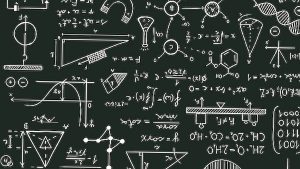
The Kissing Problem remains largely unresolved beyond the three-dimensional realm. Mathematical experts have gradually reduced the potential options to relatively limited intervals for a maximum of 24 dimensions, with a handful of dimensions being precisely determined, as evidenced by the chart presented. When considering larger numerical values or a more generalized formulation, the problem remains unconstrained. There exist multiple obstacles to achieving a comprehensive resolution, among which are computational constraints. Anticipate gradual advancement in addressing this issue over the course of several years.
2. The Twin Prime Conjecture: The Twin Prime Conjecture is a mathematical hypothesis that states there are infinitely many pairs of prime numbers that differ by two.
The Twin Prime Conjecture, along with Goldbach’s conjecture, holds a prominent position in the field of Number Theory, which concerns itself with the investigation of natural numbers and their properties, often involving prime numbers. Given your familiarity with these numerical concepts since elementary education, enunciating the conjectures comes naturally.

Twin primes are a pair of prime numbers that have a difference of 2. The numbers 11 and 13, as well as 599 and 601, are examples of twin primes. It is a well-established fact in Number Theory that there exists an infinite number of prime numbers. Is the quantity of twin primes infinite? According to the Twin Prime Conjecture, the answer is affirmative.
To provide further clarification, With the exception of one, the initial number in a set of twin primes is consistently one less than a multiple of six. It can be observed that the second twin prime number in a pair is consistently found to be one greater than a multiple of six. One can comprehend the reasoning behind this statement by delving into the complex realm of Number Theory. It is a well-known fact in number theory that all prime numbers greater than 2 are odd.
The set of even numbers can be expressed as a sum of a multiple of 6 and either 0, 2, or 4, whereas the set of odd numbers can be expressed as a sum of a multiple of 6 and either 1, 3, or 5. One of the three potential explanations for odd numbers presents a problem. If an integer is congruent to 3 modulo 6, then it is divisible by 3. If a number has a factor of 3, it is not considered a prime number, except for the number 3 itself. Consequently, it can be inferred that prime numbers cannot be every third odd number.
Encouraging advancements have been achieved in the past decade. Mathematical experts have successfully made progress towards solving increasingly refined iterations of the Twin Prime Conjecture.
Recommended: How to successfully Pitch a Business Idea to an Investor
3. The Riemann Hypothesis: Contemporary mathematicians would concur that the Riemann Hypothesis stands as the foremost unresolved problem in the entire field of mathematics. The problem in question is classified as one of the seven Millennium Prize Problems, and its resolution is accompanied by a monetary reward of $1 million. The concept in question carries significant ramifications across diverse mathematical disciplines, yet it remains sufficiently elementary to warrant a concise explication in this context.
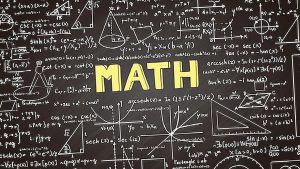
The function in question yields an infinite series for every value of s, necessitating rudimentary calculus to approximate even the most elementary values of s. An illustration of this concept can be observed when s is assigned the value of 2, resulting in the series ????(s) being equivalent to the commonly recognized sequence of 1 + 1/4 + 1/9 + 1/16 + …, which intriguingly converges to precisely ????²/6. The computation of ????(s) becomes intricate when s is a complex number expressed in the form of a+b????, where ???? denotes the imaginary unit.
The complexity of the problem has elevated it to the status of the quintessential mathematical inquiry.
The Riemann Hypothesis pertains to the instances when ????(s)=0. The formal assertion states that each nontrivial zero of the Riemann zeta function possesses a real part of 1/2. In the context of complex analysis, it can be inferred that the function exhibits a distinct characteristic along a specific vertical axis on the complex plane. The hypothesis posits that the behavior persists indefinitely in a linear fashion. The Hypothesis and the zeta function were originally introduced by Bernhard Riemann, a prominent German mathematician, in 1859. Riemann formulated these concepts during his investigation of prime numbers and their distribution. The comprehension of prime numbers has significantly advanced over the past 160 years, and the potential of supercomputers would have been beyond Riemann’s contemplation. However, the absence of a resolution to the Riemann Hypothesis represents a significant obstacle.
4. The Unknotting Problem: The Unknotting Problem is a well-known mathematical problem that involves determining whether a given knot can be transformed into an unknotted loop without cutting or passing the knot through itself.
The Unknotting Problem in its most elementary form has been successfully resolved, indicating a degree of progress in this narrative. Achieving a successful resolution of the complete iteration of the problem would represent a significantly greater accomplishment. As an illustration, one may possess the knowledge of how to execute a “square knot” and a “granny knot.”
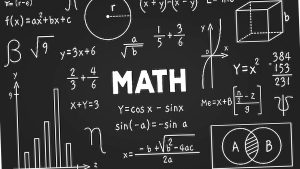
The steps involved in tying the square knot and the granny knot are identical, with the exception of the reversal of one twist in the latter. Can you provide evidence to demonstrate the distinctiveness of those knots? Knot theorists possess the ability to do so. The problem that has been of utmost importance to knot theorists is the development of an algorithm that can effectively determine whether a given complex configuration of knots is genuinely knotted or if it can be untangled to a trivial state. It is noteworthy that this task has been successfully achieved. Over the past two decades, multiple computer algorithms have been developed for this purpose, with certain ones incorporating animation into the process.
However, the problem of determining whether a given knot is equivalent to the unknot still poses a computational challenge. From a technical standpoint, it is established that the Unknotting Problem falls under the category of NP, whereas its classification under P remains unknown. This statement implies that while our algorithms possess the ability to untangle knots of varying complexities, their efficacy diminishes as the complexity of the knot increases, eventually resulting in an impractical amount of time required to complete the task. At present.
Recommended: Most Corrupt Politicians in The World: Top 10
5. The Collatz Conjecture: The Collatz Conjecture is a mathematical problem that involves iterating a function on a positive integer. The conjecture states that, regardless of the starting integer, the sequence will eventually reach 1. Despite being a simple problem, it remains unsolved and is considered one of the most famous unsolved problems in mathematics.

In September of 2019, there was a report on advancements made towards a question that had been unresolved for 82 years, which was attributed to the contributions of esteemed mathematician Terence Tao. Although Tao’s breakthrough story is encouraging, the issue remains unresolved. A brief review of the Collatz Conjecture: The focus of this discussion pertains to the function f(n) depicted above, which exhibits a behavior of halving even numbers and tripling odd numbers while adding 1 to the result.
Select an arbitrary positive integer, subject it to the function f, and subsequently iterate the application of f multiple times. The number 1 has been observed as the eventual outcome for every number that has been examined. It is postulated that the aforementioned statement holds true for all elements of the set of natural numbers, encompassing positive integers ranging from unity to infinity.
6. Is ???? Rational?: Herein lies a predicament that is facile to articulate, yet arduous to resolve. It is sufficient to remember the definition of rational numbers. The representation of rational numbers can be expressed as p/q, where p and q are integers. The numbers 42 and -11/3 are classified as rational, whereas ???? and √2 are deemed irrational. The identification of rational numbers may seem like a rudimentary attribute, leading one to assume that it can be discerned with ease.
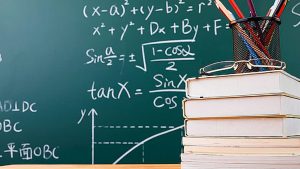
Introducing the Euler-Mascheroni constant, denoted by the lowercase Greek symbol ????. The aforementioned quantity is a real number, estimated to be approximately 0.5772, and possesses a closed form that is not excessively complex in nature. Its visual representation is depicted in the aforementioned image.
The concise expression for the aforementioned symbols is “gamma equals the limit of the difference between the harmonic series and the natural logarithm.” The aforementioned is a fusion of two extensively comprehended mathematical entities.
The mathematical expression exhibits various elegant closed forms and is featured in numerous formulaic expressions. It is uncertain whether the value of ???? can be expressed as a rational number. The numerical value has been computed up to 500 billion digits; however, the rationality of said value remains unproven. It is widely speculated that the value of ???? is an irrational number. In addition to the aforementioned example of ????+e, there exists another inquiry regarding a fundamental characteristic of a renowned numerical value, the solution to which eludes us.
See also: Types Of Citation Styles and Examples
7. The Birch and Swinnerton-Dyer Conjecture: The Birch and Swinnerton-Dyer Conjecture is a prominent problem in mathematics that concerns the relationship between the number of rational points on an elliptic curve and the behavior of its associated L-function at a certain critical point.
The Birch and Swinnerton-Dyer conjecture is a famous unsolved problem in mathematics. The conjecture represents one of the six unresolved Millennium Prize Problems, and it is the sole inquiry that can be articulated in a comprehensible manner using the English language. The aforementioned Conjecture pertains to the mathematical field of Elliptic Curves.
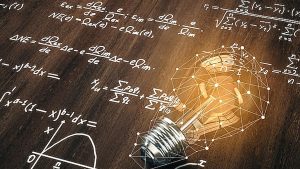
In a recent publication regarding challenging mathematical problems that have been resolved, reference was made to one of the most significant accomplishments in 20th-century mathematics, namely the resolution of Fermat’s Last Theorem. The mathematical problem was resolved by Sir Andrew Wiles through the utilization of Elliptic Curves. This can be referred to as a highly potent emerging field of mathematics. In essence, an elliptic curve is a distinct type of mathematical function. The mathematical expression y²=x³+ax+b assumes a seemingly innocuous appearance. Functions of this nature exhibit specific properties that provide valuable insights into mathematical subjects such as Algebra and Number Theory.
The conjecture formulated by Bryan Birch and Peter Swinnerton-Dyer, both of whom are British mathematicians, was developed during the 1960s. The precise articulation of the statement in question is highly specialized and has undergone modifications throughout its history. Wiles has been a significant contributor to this evolutionary process.
8. The Large Cardinal Project: The Large Cardinal Project is a research initiative in mathematical logic that focuses on the study of large cardinal numbers.
During the latter part of the 19th century, Georg Cantor, a mathematician from Germany, discovered that infinity is not a uniform concept and can be classified into various magnitudes. Cantor demonstrated that certain infinite sets possess a greater cardinality than others in a profound mathematical sense. Mathematicians continuously explore increasingly larger sizes, referred to as Large Cardinals, to address complex mathematical concepts. The aforementioned is a mathematical procedure that follows the following steps: An individual has proposed a definition for a cardinal and posits that said cardinal surpasses all currently recognized cardinals, with the intention of providing evidence to support this claim. Subsequently, in the event that their demonstration is deemed valid, it would represent the most extensive cardinal number presently recognized. Until an alternative with greater dimensions is proposed.

During the course of the 20th century, significant progress was made in expanding the frontier of established large cardinals. A wiki dedicated to the cataloging of prominent large cardinals has been established, bearing the name of Cantor as a tribute. The wiki is visually appealing. Is there a foreseeable conclusion to this situation? The response is generally affirmative, albeit with considerable intricacy.
To some extent, the uppermost level of the extensive cardinal hierarchy is within reach. Several theorems have been demonstrated that establish an upper limit on the potential existence of large cardinals. However, several unresolved inquiries persist, and additional cardinals have been appointed as recently as the year 2019. It is highly probable that further discoveries will be made in the coming decades. It is anticipated that a comprehensive catalogue of all major cardinals will be compiled in due course.
The initial infinite cardinality, also known as the minimum infinity, is represented by the symbol ℵ₀. The symbol in question is a Hebrew letter known as aleph, which is pronounced as “aleph-zero”. The cardinality of the set of natural numbers is denoted by |ℕ|=ℵ₀.
Subsequently, certain sets that are frequently encountered exhibit a cardinality greater than that of the countable infinity, denoted by ℵ₀. Cantor’s significant demonstration established that the cardinality of the set of real numbers is greater than that of the set of natural numbers, denoted as |ℝ|>ℵ₀. However, the set of real numbers is not considered to be of a significant magnitude in comparison to the infinite sizes that exist.
See also: How To Multitask Effectively: 10 Tips
9. Goldbach’s Conjecture: One of the most significant unresolved enigmas in mathematics is also a relatively straightforward concept to articulate. Goldbach’s Conjecture posits that any even number greater than two can be expressed as the sum of two prime numbers. Mental arithmetic can be employed for small numbers to verify that 18 can be expressed as the sum of 13 and 5, while 42 can be represented as the sum of 23 and 19. The Conjecture has been verified by computers for numerical values within a certain range. However, it is necessary to provide evidence for every integer in the set of natural numbers.
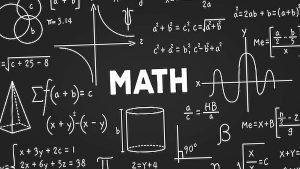
The conjecture known as Goldbach’s Conjecture originated from a correspondence in 1742 between Christian Goldbach, a German mathematician, and Leonhard Euler, a renowned Swiss mathematician widely regarded as one of the most significant figures in the history of mathematics. In accordance with Euler’s statement, the theorem in question is deemed to be entirely certain, despite the lack of a formal proof. It is possible that Euler possessed an intuition regarding the inherent difficulty in solving this particular problem. As the magnitude of numbers increases, the number of possible representations of said numbers as sums of prime numbers tends to increase rather than decrease.
The mathematical expression 3+5 is the sole means of decomposing the integer 8 into two prime numbers. However, the integer 42 can be factored into the sum of two primes in multiple ways, such as 5+37, 11+31, 13+29, and 19+23. The Goldbach Conjecture appears to be an inadequate representation for exceedingly large numbers. However, mathematicians have yet to provide a proof for the conjecture that holds true for all numbers. This inquiry represents one of the most longstanding unresolved issues in the entire field of mathematics.
10. What’s the Deal with ????+e?: All rational numbers and their corresponding roots are considered algebraic. It may give the impression that the majority of real numbers possess the property of being algebraic. Contrary to popular belief, the evidence suggests that the opposite is true. The term “transcendental” serves as the antithesis to “algebraic,” and it has been established that the majority of real numbers are transcendental, albeit within specific mathematical contexts that define the notion of “almost all.” The inquiry pertains to the classification of mathematical entities as either algebraic or transcendental.
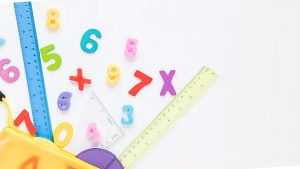
The mathematical constant ???? has a long history dating back to ancient times, whereas the constant e has been in existence since the 17th century. It is likely that you are familiar with both concepts, and one might assume that we possess a comprehensive understanding of fundamental inquiries related to them.
It is a well-established fact that both ???? and e are transcendental. The algebraic or transcendental nature of ????+e remains uncertain. Likewise, there is a lack of knowledge regarding simple combinations of ????e, ????/e, and other related expressions. Fundamental inquiries regarding numbers that have been known for thousands of years continue to elude our understanding. Considering the extensive knowledge we possess regarding two of the most renowned mathematical constants, namely ???? and e, it is rather unexpected that we encounter a certain degree of perplexity when these two values are combined.
The focus of this enigma pertains to algebraic real numbers. The following is a definition: An algebraic real number is defined as a real number that can be expressed as the solution to a polynomial equation with integer coefficients. An instance of a polynomial with integer coefficients is x²-6, as both 1 and -6 are integers. The quadratic equation x²-6=0 has two distinct solutions, namely x=√6 and x=-√6. Therefore, it follows that √6 and -√6 are examples of algebraic numbers.
See also: How to Improve Your Understanding Skill/Ability: 7 Effective Tips
In conclusion , it can be stated that the most challenging mathematical problems embody the highest level of mathematical intricacy and difficulty. Mathematicians are motivated to explore new avenues of thought by the relentless pursuit of understanding embodied in the field.
Through their persistent efforts to resolve these issues, mathematicians persist in shaping the realm of mathematics and establishing a lasting influence on our comprehension of the cosmos.

Edeh Samuel Chukwuemeka, ACMC, is a lawyer and a certified mediator/conciliator in Nigeria. He is also a developer with knowledge in various programming languages. Samuel is determined to leverage his skills in technology, SEO, and legal practice to revolutionize the legal profession worldwide by creating web and mobile applications that simplify legal research. Sam is also passionate about educating and providing valuable information to people.